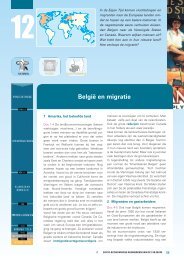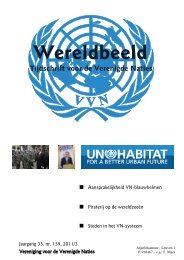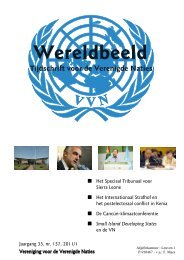Annex 5: United Nations Security Council Resolution 1874 (2009)
Annex 5: United Nations Security Council Resolution 1874 (2009)
Annex 5: United Nations Security Council Resolution 1874 (2009)
You also want an ePaper? Increase the reach of your titles
YUMPU automatically turns print PDFs into web optimized ePapers that Google loves.
Almost six months past the deadline, on June 26, 2008, North Korea submitted its muchawaited<br />
declaration. While the contents of North Korea's declaration have not been disclosed<br />
to the public, various media reports claimed that the declaration failed to address its alleged<br />
uranium enrichment program or suspicions of its nuclear proliferation to other countries,<br />
such as Syria. Despite problems with the declarations, the Bush administration notified U.S.<br />
Congress that it was removing North Korea from the U.S. list of state sponsors of terrorism<br />
and also issued a proclamation lifting some sanctions under the Trading with the Enemy<br />
Act. Following the U.S. government's action, North Korea demolished the cooling tower at<br />
the Yongbyon reactor which was broadcasted by the international media. However, North<br />
Korea announced in late August 2008 that they restored the nuclear facilities in Yongbyon<br />
and barred international inspectors from accessing the site. Pyongyang also criticizing the<br />
<strong>United</strong> States for delaying the removal of North Korea from the list of state sponsors of<br />
terror. On 11 October 2008, the <strong>United</strong> States dropped North Korea from the terrorism list<br />
after reaching a deal in which North Korea agreed to resume the disabling of its nuclear<br />
facilities and allow inspectors access to the nuclear sites. The six parties then resumed<br />
negotiations to map out a verification plan in Beijing in December 2008. These negotiations<br />
focused on ways to verify the disabling of North Korea's nuclear program, including taking<br />
nuclear samples. However, the negotiations failed to reach an agreement on a verification<br />
protocol and the issue was stalled. Then after, a rapid deterioration of the relation between<br />
North Korea and the international community followed in <strong>2009</strong>. North Korea’s increasing<br />
“belligerent” stance also may have been a response to earlier statements by the new<br />
American President Barack Obama about his commitment to avoid North Korea to become a<br />
danger. After war-mongering discourse earlier in the year, the DPRK apparently felt the<br />
need to illustrate to the outside world (South Korea, Japan and the <strong>United</strong> States of America)<br />
that it was perfectly capable of defending its own territory. The following “illustrations”<br />
were set up by North Korea;<br />
- On April 5, <strong>2009</strong>, the DPRK launched the Unha-2<br />
space booster (allegedly based on the long-range<br />
Taepodong-2). Although the launch was more<br />
successful than the 2006 test, the third stage still<br />
failed to separate properly. A missile test or a satellite<br />
attempt, the launch nevertheless violates earlier UN<br />
<strong>Security</strong> <strong>Council</strong>'s resolutions. Because the Unha-2's<br />
first stage engine is the Musudan (Nodong-B /<br />
Taepodong-X), North Korea claims they have<br />
demonstrated the 4000 km range and reliability of its<br />
new Musudan missile. This means North Korea may be able to develop/deploy mobile<br />
ICBMs within 7–10 years, which can survive a US first strike;<br />
- On May 25, <strong>2009</strong>, the DPRK conducted the second nuclear test in its history;<br />
- On July 2, <strong>2009</strong>, North Korea test fired a series of at least four surface-to-ship cruise<br />
missiles into the Sea of Japan;<br />
- Two days later, on July 4, they proceeded to test fire<br />
a further seven Scud-type ballistic missiles into the<br />
same sea. The tests are seen by world powers as a<br />
symbol of defiance to the <strong>United</strong> <strong>Nations</strong> set over<br />
North Korea after their nuclear test on May 25, <strong>2009</strong>.<br />
These launches come only a week after US President<br />
Barack Obama extended US economic sanctions<br />
against North Korea. This is also a response to the<br />
UN's sanctions that were imposed on 12 June <strong>2009</strong><br />
(UN <strong>Security</strong> <strong>Council</strong> <strong>Resolution</strong> - UNSC <strong>1874</strong> [<strong>2009</strong>], see <strong>Annex</strong> 5 for the full text, read<br />
the decisions taken by the UN <strong>Security</strong> <strong>Council</strong>).<br />
© <strong>2009</strong> – Dr. D. Criekemans – Negotiations in UNSC on the continuing security provocations by North Korea 6







